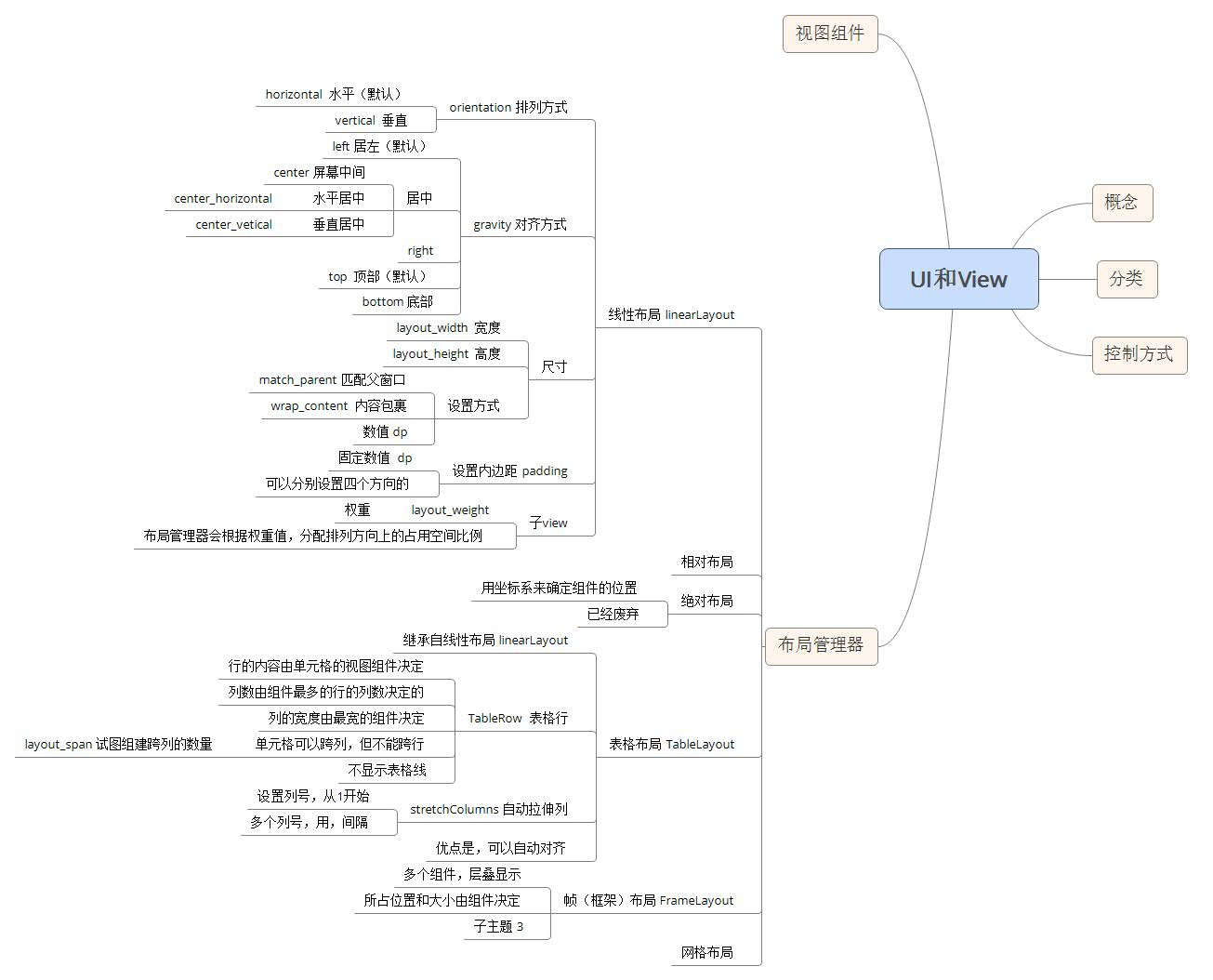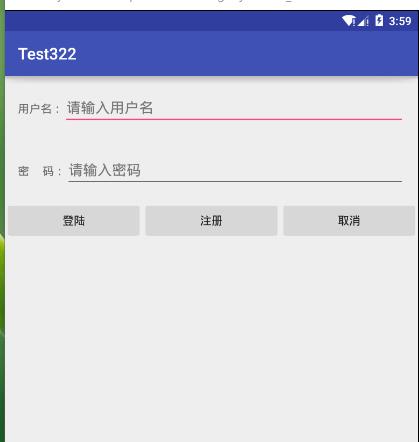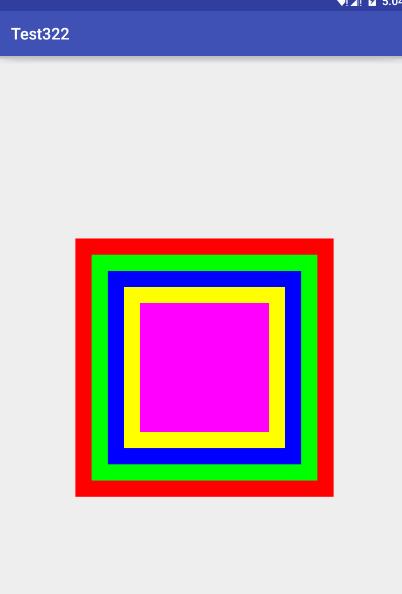Android——布局(线性布局linearLayout,表格布局TableLayout,帧布局FrameLayout)

线性布局:
<?xml version="1.0" encoding="utf-8"?>
<LinearLayout xmlns:android="http://schemas.android.com/apk/res/android"
xmlns:tools="http://schemas.android.com/tools"
android:layout_width="match_parent"
android:layout_height="match_parent" tools:context="com.example.chenshuai.test322.MainActivity"
android:orientation="vertical"
android:gravity="center_horizontal" >
<LinearLayout
android:layout_width="match_parent"
android:layout_height="wrap_content"
android:padding="16dp"> <TextView
android:layout_width="wrap_content"
android:layout_height="wrap_content"
android:text="用户名:"
/>
<EditText
android:layout_width="match_parent"
android:layout_height="wrap_content"
android:hint="请输入用户名"/><!--默认值-->
</LinearLayout> <LinearLayout
android:layout_width="match_parent"
android:layout_height="wrap_content"
android:padding="16dp"> <TextView
android:layout_width="wrap_content"
android:layout_height="wrap_content"
android:text="密 码:"
/>
<EditText
android:layout_width="match_parent"
android:layout_height="wrap_content"
android:hint="请输入密码"
android:password="true"/><!--密码输入框-->
</LinearLayout>
<LinearLayout
android:layout_width="match_parent"
android:layout_height="wrap_content"
android:gravity="center_horizontal"> <Button
android:layout_width="0dp"
android:layout_height="wrap_content"
android:text="登陆"
android:layout_weight="1"/><!--权重-->
<Button
android:layout_width="0dp"
android:layout_height="wrap_content"
android:text="注册"
android:id="@+id/button2"
android:layout_weight="1"/>
<Button
android:layout_width="0dp"
android:layout_height="wrap_content"
android:text="取消"
android:layout_weight="1"/> </LinearLayout> </LinearLayout>

表格布局
<?xml version="1.0" encoding="utf-8"?>
<TableLayout xmlns:android="http://schemas.android.com/apk/res/android"
android:layout_width="match_parent"
android:layout_height="match_parent"
android:stretchColumns="1,2"> <TableRow>
<TextView
android:layout_width="wrap_content"
android:layout_height="wrap_content"
android:text="用户名:"
/>
<EditText
android:layout_width="match_parent"
android:layout_height="wrap_content"
android:layout_span="2"
android:hint="请输入用户名"/> </TableRow>
<TableRow>
<TextView
android:layout_width="wrap_content"
android:layout_height="wrap_content"
android:text="密码:"
/>
<EditText
android:layout_width="match_parent"
android:layout_height="wrap_content"
android:password="true"
android:layout_span="2"
android:hint="请输入密码"/>
</TableRow>
<TableRow>
<Button
android:layout_width="0dp"
android:layout_height="wrap_content"
android:text="登陆"
android:layout_weight="1"/><!--用权重对应的数值设为0dp-->
<Button
android:layout_width="0dp"
android:layout_height="wrap_content"
android:text="注册"
android:id="@+id/button2"
android:layout_weight="1"/>
<Button
android:layout_width="0dp"
android:layout_height="wrap_content"
android:text="取消"
android:layout_weight="1"/>
</TableRow> </TableLayout>

帧布局
<?xml version="1.0" encoding="utf-8"?>
<FrameLayout xmlns:android="http://schemas.android.com/apk/res/android"
android:layout_width="match_parent"
android:layout_height="match_parent"> <TextView
android:layout_width="wrap_content"
android:layout_height="wrap_content"
android:width="320dp"
android:height="320dp"
android:layout_gravity="center"
android:background="#f00"/><!--红色-->
<TextView
android:layout_width="wrap_content"
android:layout_height="wrap_content"
android:width="280dp"
android:height="280dp"
android:layout_gravity="center"
android:background="#0f0"/><!--绿色-->
<TextView
android:layout_width="wrap_content"
android:layout_height="wrap_content"
android:width="240dp"
android:height="240dp"
android:layout_gravity="center"
android:background="#00f"/><!--蓝色-->
<TextView
android:layout_width="wrap_content"
android:layout_height="wrap_content"
android:width="200dp"
android:height="200dp"
android:layout_gravity="center"
android:background="#ff0"/><!--黄色-->
<TextView
android:layout_width="wrap_content"
android:layout_height="wrap_content"
android:width="160dp"
android:height="160dp"
android:layout_gravity="center"
android:background="#f0f"/><!--紫色--> </FrameLayout>

Android——布局(线性布局linearLayout,表格布局TableLayout,帧布局FrameLayout)的更多相关文章
- Android 自学之帧布局 FrameLayout
帧布局(FrameLayout)直接继承了ViewGroup组件: 帧布局容器为每一个加入其中的组件都创建了一个空白的区域,这个区域我们称之为一帧,所有每个组件都占据一帧,这些都会根据gravity属 ...
- Android开发5:布局管理器2(表格布局TableLayout)
版本:Android4.3 API18 学习整理:liuxinming 概念 TableLayout继承了LinearLayout,因此它的本质依然是线性布局管理器. 表格布局采 ...
- Android -- UI布局管理,相对布局,线性布局,表格布局,绝对布局,帧布局
1. 相对布局 <RelativeLayout xmlns:android="http://schemas.android.com/apk/res/android" xmln ...
- Android五大布局详解——LinearLayout(线性布局)
Android五大布局 本篇开始介绍Android的五大布局的知识,一个丰富的界面显示总是要有众多的控件来组成的,那么怎样才能让这些控件能够按你的想法进行摆放,从而自定义你所想要的用户界面呢?这就牵涉 ...
- Android精通:TableLayout布局,GridLayout网格布局,FrameLayout帧布局,AbsoluteLayout绝对布局,RelativeLayout相对布局
在Android中提供了几个常用布局: LinearLayout线性布局 RelativeLayout相对布局 FrameLayout帧布局 AbsoluteLayout绝对布局 TableLayou ...
- [转]浅谈Android五大布局(二)——RelativeLayout和TableLayout
在浅谈Android五大布局(一)中已经描述了LinearLayout(线性布局).FrameLayout(单帧布局)和AbsoulteLayout(绝对布局)三种布局结构,剩下的两种布局Relati ...
- Android布局管理器(表格布局)
表格布局有TableLayout所代表,TableLayout继承了LinearLayout,因此他的本质依然是LinearLayout. 表格布局采用行.列的形式来进行管理,在使用的时候不需要声明多 ...
- Android笔记(七) Android中的布局——线性布局
我们的软件是由好多个界面组成的,而每个界面又由N多个控件组成,Android中借助布局来让各个空间有条不紊的摆放在界面上. 可以把布局看作是一个可以放置很多控件的容器,它可以按照一定的规律调整控件的位 ...
- 一步一步学android之布局管理器——LinearLayout
线性布局是最基本的一种布局,在基本控件篇幅中用到的都是LinearLayout,线性布局有两种方式,前面也有用到,一种是垂直的(vertical),一种是水平的(horizontal).我们同样来看下 ...
随机推荐
- 【转】js-ES6学习笔记-Symbol
原文:https://www.cnblogs.com/zczhangcui/p/6435652.html https://blog.mgechev.com/2017/09/16/developing- ...
- C# 怎么显示中文格式的星期几
1.DateTime.Now.ToString("dddd",new System.Globalization.CultureInfo("zh-cn")); 2 ...
- UVA11402 - Ahoy, Pirates!(线段树)
UVA11402 - Ahoy, Pirates!(线段树) option=com_onlinejudge&Itemid=8&category=24&page=show_pro ...
- javaWeb注册,登陆,注销功能的实现
一:注册页面:regist.jsp: <%@ page language="java" contentType="text/html; charset=UTF-8& ...
- LeetCode-2: Add Two Numbers
[Problem:2-Add Two Numbers] You are given two non-empty linked lists representing two non-negative i ...
- laravel使用的模板引擎 blade
使用blade引擎的话必须在控制器中使用use Blade
- ubuntu 命令行下查看网页 w3m
w3m localhost/index.php
- 探秘蓝牙隐藏API
上次讲解Android的蓝牙基本用法,这次讲得深入些,探讨下蓝牙方面的隐藏API.用过Android系统设置(Setting)的人都知道蓝牙搜索之后可以建立配对和解除配对,但是这两项功能的函数没有在S ...
- PhotoView
PhotoView 介绍 追求美是人的天性 PhotoView.js 灵感来自于picasa 本功能是为了解决运营对后台管理系统中用户上传的各种角度和尺寸的图片难以浏览的问题,于是花了两天时间写了这个 ...
- ubuntu环境下配置jdk
方法1:修改/etc/profile 文件 /etc/profile:在登录时,操作系统定制用户环境时使用的第一个文件,此文件为系统的每个用户设置环境信息,当用户第一次登录时,该文件被执行. 所有用户 ...
